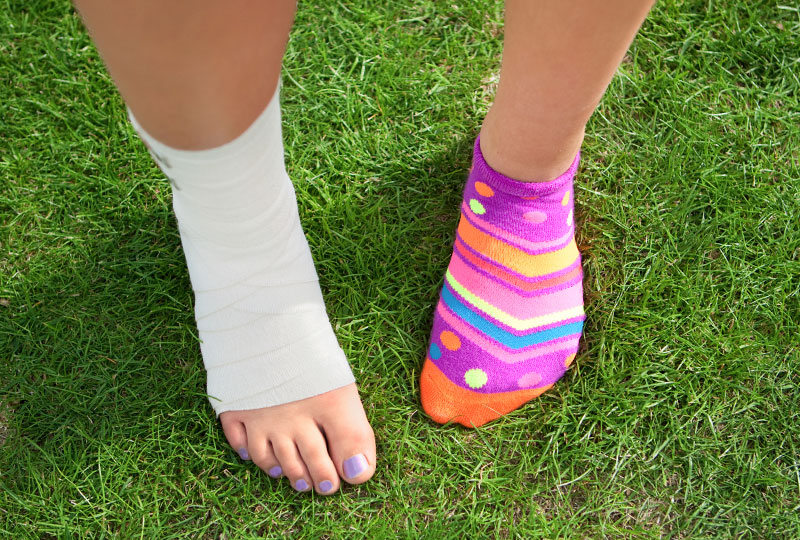R.I.C.E. or see the doctor? Remember this acronym the next time someone has an ankle sprain.
It’s a perfect time to spend a Saturday at Seven Oaks Park, disc golfing with the family.
But what if the woods get the better of your child, and that birdie gives him a sprained ankle? Should you go immediately to the doctor? Go home and send the patient straight to the couch?
An individual with an ankle sprain can usually walk, although painfully, and may have mild swelling and discoloration. If an injury fit this description, the first thing to do is follow the R.I.C.E. principle: rest, ice, compression and elevating the foot (keep it raised, with a stack of pillows or on the arm of the couch).
Vanderbilt Orthopaedics offers the following details for R.I.C.E:
Rest: Rest the ankle. This is the first step in treating ankle sprains. (How to know the difference between sprains, strains and breaks.) Activities that aggravate the injury should be avoided or diminished. Rest allows the small tears in the ligaments to heal.
Ice: Apply cold therapy to decrease inflammation and pain. Treat the ankle with an ice bag two to three times a day for a period of 15 to 20 minutes each time.
Compression: Use an elastic bandage or compression sleeve to keep swelling from accumulating in the ankle and going to the toes.
Elevation: Elevate the ankle to help reduce swelling. Be sure to raise the ankle above heart level. At night you can place some books between the mattress and box springs on the bed to keep the foot elevated.
If the injury symptoms don’t begin to get better after two to three days of this care, get medical attention.
If at the time of injury, the pain is bad enough that the injured person can’t put any weight on the joint, the National Institutes of Health advises a trip to the doctor’s office. See a health care provider if:
- the injured area looks crooked or has lumps and bumps other than swelling
- there is numbness
- the area has been injured several times before
- or, as with most cases, if you have any doubt about the seriousness of the injury or how to care for it.

Struggling with ankle pain?
Learn more about Vanderbilt Orthopaedics and schedule your appointment today.




